
I find this poster for Lego‘s “Basic Building Set” quite pleasing and rather beautiful, with its simple presentation of Lego bricks as color, geometry, mathematics, proportion and possibility.
With thanks to Tombolare

I find this poster for Lego‘s “Basic Building Set” quite pleasing and rather beautiful, with its simple presentation of Lego bricks as color, geometry, mathematics, proportion and possibility.
With thanks to Tombolare

Anthony is a web / graphic designer and musician who lives in New York. In 2009, Anthony created these rather fine faux adverts on his site Seriously Bleak.
Called Celebrity Endorsed the ads show a selection of strangely alluring and bizarre celebrity endorsed products - I’m all for the Merv Griffen scented trampoline, though several friend’s are torn between Ted Danson’s Siamese hot-dog and Armand Assante’s neck wallet. Whichever is your favorite, I do hope Anthony produces more of these fine celebrity endorsements asap.

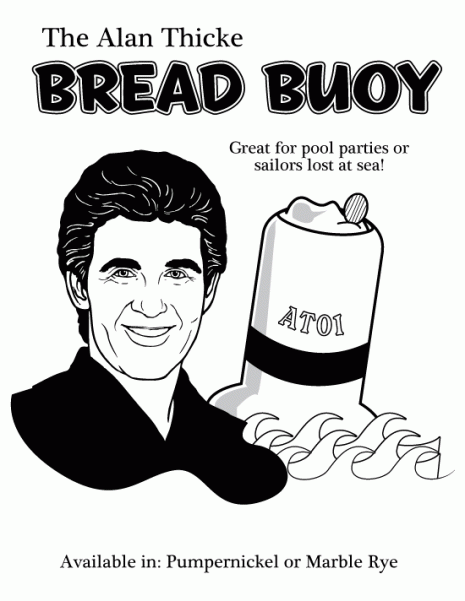
“I can’t tell you how many times I’ve been stranded at sea and thought “Hey, I’d love some chips an dip right now.” Well now it’s a reality!”
Via Seriously Bleak
More from Celebrity Endorsed, after the jump…
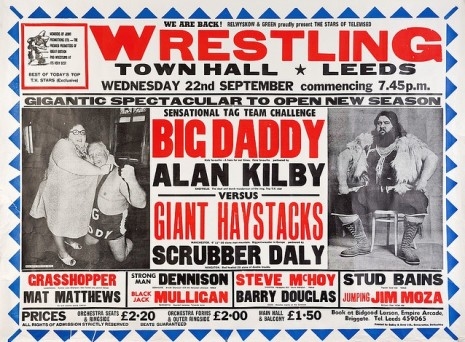
After four on a Saturday afternoon, housewives, grandmothers, and young fearless children watched grown men in swim trunks hurl each other across a canvas ring. These men weren’t just wrestlers, they were household gods worshipped by generations: Big Daddy, Giant Haystacks, Les Kellett, Mike Marino, Jackie (“Mr. T.V.”) Pallo, the masked Kendo Nagasaki, and my favorite, “the man you love to hate”, Mick McManus.
British wrestlers were more like stage entertainers, who traveled around the country fighting 4 or 5 times a week in different venues across England. They mixed the camp (Gorgeous George, The Gay One) with the bizarre (Catweazle, Rollerball Rocco) and the best (Mick McManus, Kendo Nagasaki), and by the time wrestling became the biggest hit for ITV’s Saturday’s World of Sport, most of the big names were in their late thirties and early forties, but it didn’t stop these podgy, middle-aged men from becoming sex symbols.
The people’s favorite was Big Daddy (aka Shirley Crabtree), who had made his name as a rugby player before wrestling under the names of The Blonde Adonis, Mr. Universe and The Battling Guardsman, in the 1950s.
Crabtree, with his ill-fitting leotard (decoratively embroidered by his wife) was coaxed out of retirement and became the most successful and best-loved wrestler of the 1970s and 1980s - even Prime Minister Margaret Thatcher was a fan. Though limited by his size and age, Big Daddy brought such novel wrestling moves as the “Belly-Butt” and “Belly-Splash” to the audiences’ delight, who chanted “easy, easy, easy,” whenever the likable Daddy stepped into the ring.
Big Daddy had feuds with various wrestlers, most notably Giant Haystacks, the 6 foot 11, London-Irish wrestler, who at one point weighed 48 stone. How this giant of a man was ever beaten by Big Daddy is beyond belief, and led to suggestions the sport was fixed. This was later confirmed in 1985, by “Mr T.V.” Jackie Pallo, in his autobiography You Grunt, I’ll Groan. Pallo was a flash, show biz wrestler, with long hair and striped trunks, who claimed referees carried razors to nick wrestlers’ ears to add authenticity (Pallo preferred to bite his lip) and said the sport was TV entertainment:
“Of course it was, it was pure showbiz right from the start.”
Pallo had a career in TV, appearing in The Avengers, It Ain’t Half Hot Mum and regularly on stage in pantomime. Where Palo was a showman, wrestlers like Mike Marino, Les Kellett and Mick McManus took the sport seriously. The short, dumpy, balding McManus was the sport’s anti-hero.
He won his first wrestling title, the British Welterweight Championship, in 1949, by defeating Eddie Capelli. He lost it to Jack Dempsey in 1957 but regained it, then lost it again. In 1967, McManus won the British Middleweight Championship with a victory over Clayton Thomson. He also won the European Middleweight Championship in June 1968 by defeating Vic Faulkner. Though lost it again to Faulkner the following year. Never fear, McManus won it back in 1971, and held onto it for 7 years.
McManus was brilliant, always entertaining, and usually bent the rules with some questionable blows. He was famous for his fore-arm smash and Boston Crab and relished the audience’s jeers. He never seemed to change, and thirty years after his hey-day I once saw McManus in a bar, immaculately dressed in a suit, and looking no different than he did back in the 1960s and ‘70s.
McManus is credited as an influence on Kendo Nagasaki (real name Peter Thornley), who refused to reveal his identity, and disguised himself behind a samurai mask. Nagasaki was another brilliant wrestler, who mixed Martial Arts, Eastern philosophy with incredible skill. He was famously robbed of the CWA World title by Giant Haystacks, after Haystacks ripped off his mask, forcing Nagasaki to abandon the contest.
It was McManus and Nagaski who inspired British Pop Artist, Peter Blake to paint his wrestler series.
Another brief star of wrestling was the world’s first DJ and legendary Top of the Pops host, Jimmy Savile, who fought in golden leotard and boots, before giving it up after losing too many fights.
These fabulous posters from the golden age of British wrestling has been compiled by Jane McDevitt on her fantastic Flickr stream, which can be seen here. Check out some of the pics and names - wonderful.
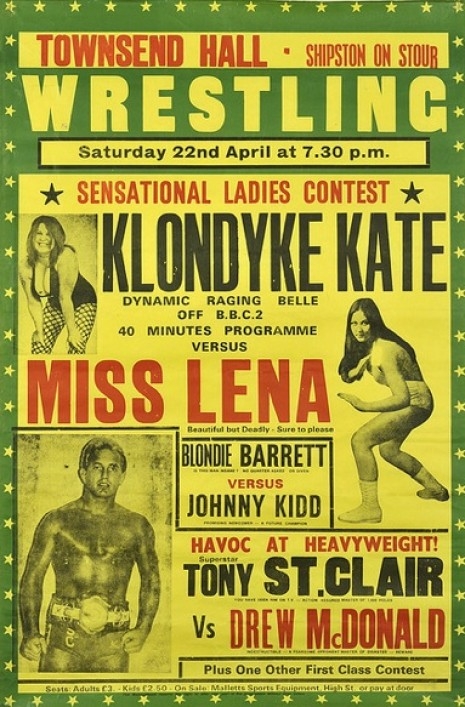
With thanks to Tara McGinley
More fabulous posters of these wrestling legends, after the jump…

Since 2006 photographer and artist Patrick Winfield has been creating these giant Polaroid composites.
“My work is about juxtaposing various elements to make something new, playing with the familiar to form some fantasy. A recycling of imagery to create new symbols. I draw with my camera and film or with found images and the xacto knife.”
Check more of Winfield’s work here, and his blog here.

More of Winfield’s beautiful Polaroids, after the jump…

The always beautiful Debbie Harry talks fashion, clothes and style, before modeling a selection of Stephen Sprouse’s designs, in this interview from 1979.
Interviewer: Did you grow up around fashion?
Debbie Harry : No, not really. I grew up in New Jersey.
Previously on DM
Blondie’s ‘Autoamerican’: A Lost Classic

Never judge a book by its cover, but on this occasion I’ll make an exception. A beautiful trippy design for Canongate Books’ edition of Incognito by David Eagleman. It reminds me of those fabulous paintings Bridget Riley and Victor Vasarely.
Via The Casual Optimist, with thanks to William Clark


I recall as a child that the Daleks were as popular as The Beatles. TV, cinema, candy stores and toy shops were crammed with Dalekmania. One Christmas I received a stocking-filled with assorted Dalek paraphernalia: a toy, an annual and a Daleks costume, which consisted of a grey plastic hood, attached to a red plastic tent, and covered with white polka dots. It was through this that I poked the sink plunger and drum-stick to intimidate all who crossed my path.
Now for those who still have a love for those dastardly creations, there is Dalek6338, the ultimate site for all things Dalek
Described as “An exhaustive - if bonkers - work of genius”, Dalek6338 was originally started by Jon Green as “a resource for fans who wanted to learn about the origins of the Dalek props built for Doctor Who.” Through trial and error, and a fortuitous collaboration with Gav, another ardent Dalek fan, the site has developed into the definitive Dalek resource - an excellent treasure trove for those who love, like or are mildly interested in the history and derivation of the Daleks.
Bonus clips of Doctor Who and the Daleks after the jump…

Artist, Alex Holder posed with her boyfriend, Ross Neil, to recreate classic covers from Mills & Boon‘s romantic fiction novels. Alex is part of Oli + Alex the award-winning creatives behind ads for Amnesty International, Nike, McDonalds, and Brylcream.
Alex’s Mills and Boon project subverts the original cover paintings, and are tagged with barbed titles:
Sometimes we sit for hours staring at a seashell.
Other times he’ll hold me by the neck in front of the pyramids.
But there’s nothing we like more than nearly kissing each other near some horses.
I always try to look hot in front of him so he doesn’t leave me.

The photos were created as part of the W Project for International Women’s Day, and as Alex explained in the Daily Mail:
“It was my idea, I thought it would be funny. I painted the backdrops, and sourced the clothes myself.
They were shot in my studio at my flat in London with the help of my creative partner Oli Kellett and a lot of fake tan.”
Mills and Boon have been publishing racy romantic fiction for over one hundred years, and Oliver Rhodes, Head of Marketing, at the company welcomed the Alex’s homages, as he told the Guardian:
“Our covers have always captured contemporary fashions and styles from our classic 1960s book jackets to our newest range, Riva. It’s great to see that Mills & Boon’s iconic covers continue to inspire the art world.”

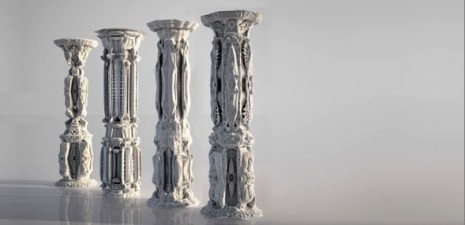
Michael Hansmeyer is an architect and programmer who explores the use of algorithms and computation to generate architectural form, and he has created these incredible cardboard sculptures using algorithms. As he explains on his website:
In recent years, algorithms in architecture have been able to transcend their role as frameworks of formalization and abstraction. This has been made possible in a large part by the integration of scripting languages into CAD programs. Algorithms’ output can now be directly visualized, and through digital fabrication methods this output can be built.
This opens up a new role for algorithms as a design tool. As such, they provide the benefits of depth and breadth. On the one hand, their computational power can address processes with a scale and complexity that precludes a manual approach. On the other hand, algorithms can generate endless permutations of a scheme. A slight tweaking of either the input or the process leads to an instant adaptation of output. When combined with an evaluative function, they can be used to recursively optimize output on both a functional and aesthetic level.
As the New Scientist magazine reports, to make these sculptures:
...Hansmeyer started with a computer model of a simple Greek column and ran it through a subdivision algorithm which repeatedly splits the surface, creating more detail with each iteration.
The result is a 3D model with between 8 and 16 million faces, but 3D printers can only handle half a million, so Hansmeyer needed an alternative solution to transform his creations from virtual to physical reality. He sliced the column into 2700 pieces and used a laser cutter to create each slice from 1mm-thick cardboard, then reconstructed the column by layering the slices together with a solid wooden core. The whole process only cost $1500 and took about 15 hours, with three laser cutters working in parallel.
To see more of Hansmeyer’s work, check here.
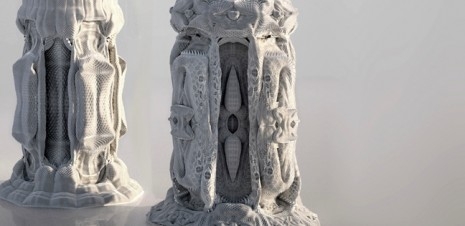
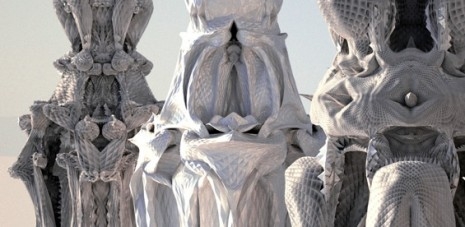
With thanks to Iris Lincoln
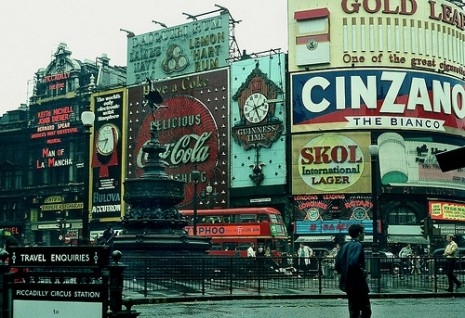
These two short films from Rank’s classic Look at Life, hint at two of J G Ballard’s preoccupations - high rises and cars.
“Rising to High Office”, made in 1963, examines the development of high rise corporate life; while “Goodbye Piccadilly” looks at the planned redevelopment of the famous London landmark at the start of the sixties that intended to create a “double-decker” Piccadilly Circus, with a new pedestrian concourse above the ground-level traffic. The plans were lasted for most of the decade, but were killed off in 1972 when it was discovered the plans would not help the required increase in traffic flow.
Amazing quality and in fabulous color, they capture a little seen aspect of the changing face of London during its most famous decade.
Previously on DM
High Rise London in the swinging sixties, after the jump…
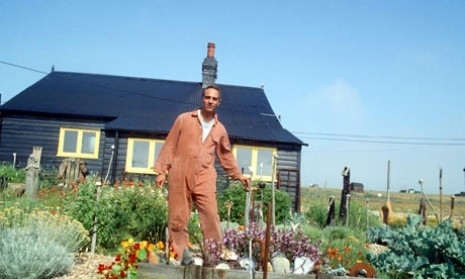
Glasgow architects NORD have built a stunning new holiday home, Shingle House, on Dungeness beach, just a stone’s throw away from Derek Jarman’s famous Prospect Cottage. The Shingle House was built under Alain de Botton’s Living Architecture scheme, which offers “a chance to rent houses for a holiday designed by some of the most talented architects at work today, and set in some of the most stunning locations in Britain.”
Living Architecture is a social enterprise dedicated to the promotion and enjoyment of world-class modern architecture. We have asked a series of great architects to design houses for us around Britain and are making these available to rent for holidays all year round.
We started the organisation from a desire to shift perceptions of modern architecture. We wanted to allow people to experience what it is like to live, eat and sleep in a space designed by an outstanding architectural practice. While there are examples of great modern buildings in Britain, they tend to be in places that one passes through (eg. airports, museums, offices) and the few modern houses that exist are almost all in private hands and cannot be visited.
We see ourselves first and foremost as an educational body, dedicated to enhancing the appreciation of architecture. But we also hope that you will have an exceptional holiday with us.
Other holidays homes have been built in Suffolk, Kent and Norfolk, and are all currently available to rent.
NORD’s beautiful Shingle House is near the famed cottage of legendary film-maker Derek Jarman, with its beautiful garden among the shingle and salt air of the Dungeness coast. He described this retreat from London life in a collected volume of his diaries, Modern Nature:
Prospect Cottage, its timbers black with pitch, stands on the shingle at Dungeness. Built eighty years ago at the sea’s edge - one stormy night many years ago waves roared up to the front door threatening to swallow it… Now the sea has retreated leaving bands of shingle. You can see these clearly from the air; they fan out from the lighthouse at the tip of the Ness like contours on a map.
Prospect faces the rising sun across a road sparkling silver with sea mist. One small clump of dark green broom breaks through the flat ochre shingle. Beyond, at the sea’s edge, are silhouetted a jumble of huts and fishing boats, and a brick kutch, long abandoned, which has sunk like a pillbox at a crazy angle; in it, many years ago, the fishermen’s nets were boiled in amber preserve.
For more information about NORD or renting Shingle House visit Living Architecture.

Previously on Dangerous Minds
Derek Jarman: A Film by Steve Carr
More photos of Nord’s cottage plus bonus clip, after the jump…
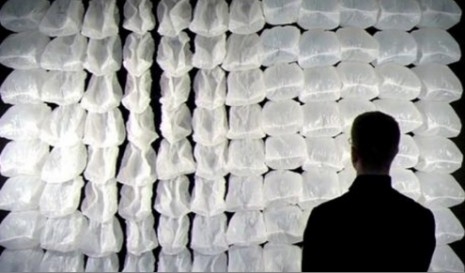
One Hundred and Eight
Hundred and Eight One
and Eight One Hundred
Eight One Hundred and…you get the picture.
One Hundred and Eight is an interactive wall-mounted Installation made German designer by Nils Völker. The display mainly consists of ordinary household garbage bags, which are selectively inflated and deflated in turn by a two colling fans.
Although each plastic bag is mounted stationary the sequences of inflation and deflation create the impression of lively and moving creatures which waft slowly around like a shoal. But as soon a viewer comes close it instantly reacts by drawing back and tentatively following the movements of the observer. As long as he remains in a certain area in front of the installation it dynamically reacts to the viewers motion. As soon it does no longer detect someone close it reorganizes itself after a while and gently restarts wobbling around.